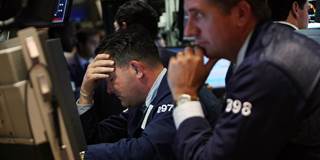Three of the last four US recessions stemmed from unforeseen shocks in financial markets. Most likely, the next downturn will be no different: the revelation of some underlying weakness will trigger a retrenchment of investment, and the government will fail to pursue counter-cyclical fiscal policy.
BERKELEY – Over the past 40 years, the US economy has experienced four recessions. Among the four, only the extended downturn of 1979-1982 had a conventional cause. The US Federal Reserve thought that inflation was too high, so it hit the economy on the head with the brick of interest-rate hikes. As a result, workers moderated their demands for wage increases, and firms cut back on planned price increases.

BERKELEY – Over the past 40 years, the US economy has experienced four recessions. Among the four, only the extended downturn of 1979-1982 had a conventional cause. The US Federal Reserve thought that inflation was too high, so it hit the economy on the head with the brick of interest-rate hikes. As a result, workers moderated their demands for wage increases, and firms cut back on planned price increases.